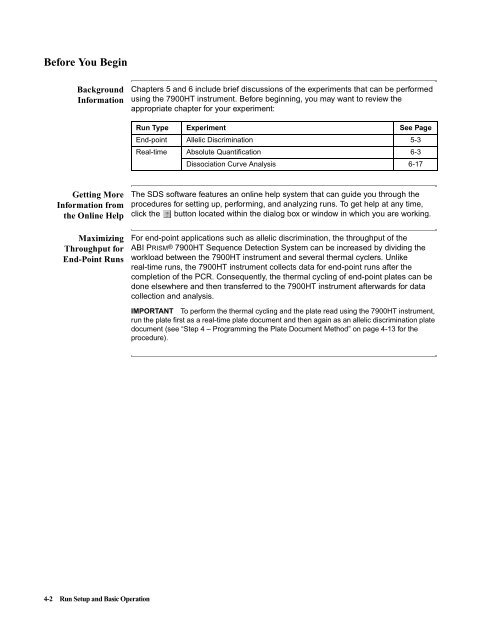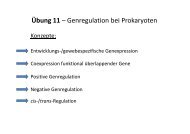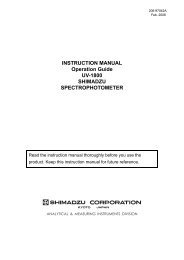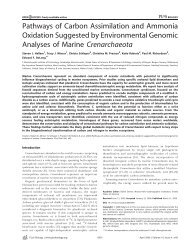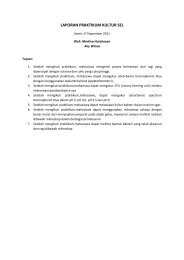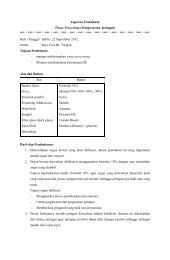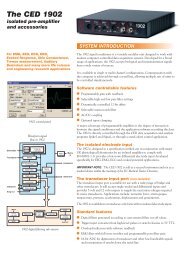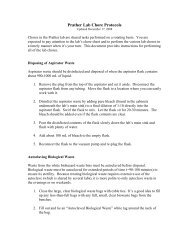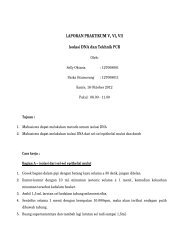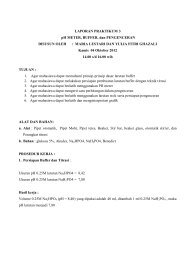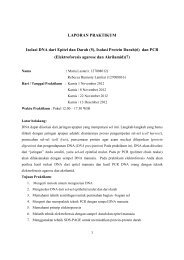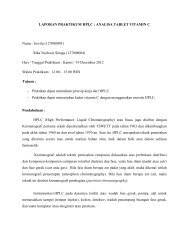ABI Prism® 7900HT Sequence Detection System ... - OpenWetWare
ABI Prism® 7900HT Sequence Detection System ... - OpenWetWare
ABI Prism® 7900HT Sequence Detection System ... - OpenWetWare
Create successful ePaper yourself
Turn your PDF publications into a flip-book with our unique Google optimized e-Paper software.
Before You Begin<br />
Background<br />
Information<br />
Getting More<br />
Information from<br />
the Online Help<br />
Maximizing<br />
Throughput for<br />
End-Point Runs<br />
4-2 Run Setup and Basic Operation<br />
Chapters 5 and 6 include brief discussions of the experiments that can be performed<br />
using the <strong>7900HT</strong> instrument. Before beginning, you may want to review the<br />
appropriate chapter for your experiment:<br />
Run Type Experiment See Page<br />
End-point Allelic Discrimination 5-3<br />
Real-time Absolute Quantification 6-3<br />
Dissociation Curve Analysis 6-17<br />
The SDS software features an online help system that can guide you through the<br />
procedures for setting up, performing, and analyzing runs. To get help at any time,<br />
click the button located within the dialog box or window in which you are working.<br />
For end-point applications such as allelic discrimination, the throughput of the<br />
<strong>ABI</strong> PRISM® <strong>7900HT</strong> <strong>Sequence</strong> <strong>Detection</strong> <strong>System</strong> can be increased by dividing the<br />
workload between the <strong>7900HT</strong> instrument and several thermal cyclers. Unlike<br />
real-time runs, the <strong>7900HT</strong> instrument collects data for end-point runs after the<br />
completion of the PCR. Consequently, the thermal cycling of end-point plates can be<br />
done elsewhere and then transferred to the <strong>7900HT</strong> instrument afterwards for data<br />
collection and analysis.<br />
IMPORTANT To perform the thermal cycling and the plate read using the <strong>7900HT</strong> instrument,<br />
run the plate first as a real-time plate document and then again as an allelic discrimination plate<br />
document (see “Step 4 – Programming the Plate Document Method” on page 4-13 for the<br />
procedure).


